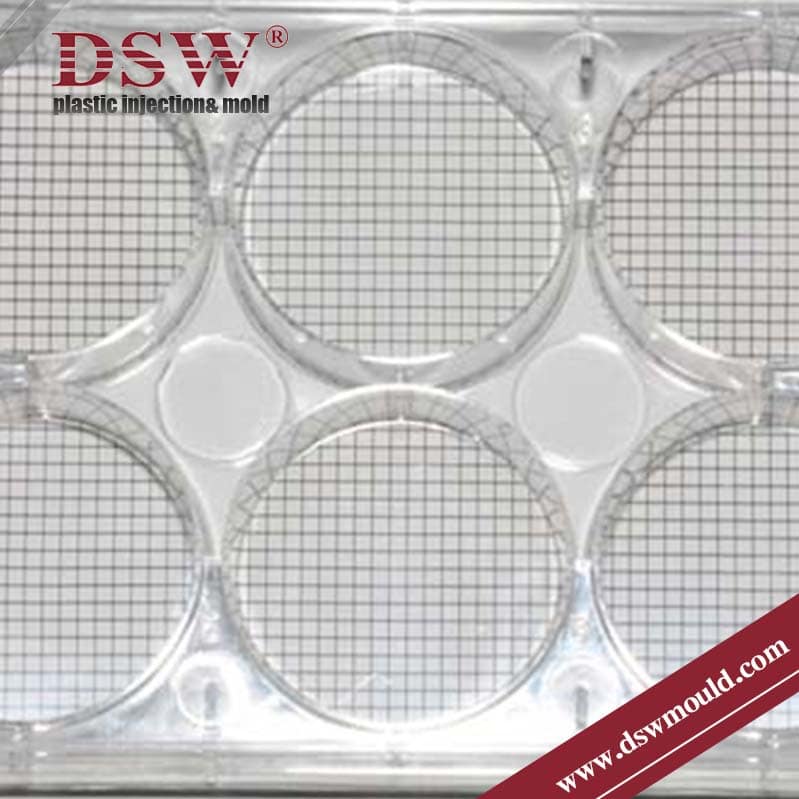Plastic injection molding represents a widely adopted manufacturing technique that transforms thermoplastic pellets into vast quantities of intricate parts. The injection molding process is suitable for various plastic materials and is pivotal in modern existence. Phone cases, electronic housings, toys, and even automotive components owe their existence to this technology.
Injection molding process-Fundamentals of Plastic Injection Molding
The basics of the injection molding process entail designing the product, fabricating a mold tailored to the design, melting plastic resin pellets, and utilizing pressure to inject the molten material into the mold.
The breakdown of each step follows:
Designing the Product
Designers, such as engineers or mold maker businesses, create a part in the form of a CAD file or another transferable format, adhering to fundamental design guidelines specific to injection molding. To enhance the success of a plastic injection mold, designers should endeavour to incorporate the following features in their designs:
• Bosses for threaded inserts/fasteners.
• Constant or near-constant wall thicknesses.
• Smooth transitions between variable wall thicknesses.
• Hollow cavities in thick sections.
• Rounded edges.
• Draft angles on vertical walls.
• Ribs for support.
• Friction fits, snap-fit joints, and other non-fastener joining features.
• Living hinges.
Additionally, designers should minimize the following features to mitigate defects in their designs:
• Non-uniform wall thicknesses or excessively thin/thick walls.
• Vertical walls lacking draft angles.
• Sudden geometrical changes (corners, holes, etc.).
• Poorly designed ribbing.
• Undercuts/overhangs.

Fabricating a Mold Aligned with the Product Design
Highly skilled machinists and toolmakers employ product design to manufacture a mold for the injection molding machine. The tooling mold, the core component of the injection molding machine, is meticulously crafted to encompass the negative cavity conforming to the product design. Additionally, it incorporates supplementary features such as sprues, runners, gates, vents, ejector systems, cooling channels, and movable components. Tooling molds are composed of specific steel and aluminum grades capable of enduring tens of thousands, or even hundreds of thousands, of heating and cooling cycles. Examples of such materials include 6063 aluminium, P20 steel, H13 steel, and 420 stainless steel. The fabrication process of the mold, encompassing both fabrication and approval, spans over 20 weeks, rendering it the most time-consuming aspect of injection molding. Moreover, it represents the most costly phase and any substantial modifications to the tooling mold incur additional expenses.
Melting the Plastic Resin Pellets
Upon obtaining the completed mold, operators insert it into the injection molding machine, initiating the injection molding cycle.
Plastic granules are fed into the hopper and subsequently into the barrel. The reciprocating screw withdraws, enabling the material to fill the space between the screw and the barrel. The screw then moves forward, propelling the material into the barrel and closer to the heater bands, where it liquefies into molten plastic. The temperature is meticulously maintained based on the material specifications to prevent the barrel’s or mold’s degradation.
Utilizing Pressure to Inject the Molten Pellets Into the Mold
The reciprocating screw propels the molten plastic through the nozzle, which is seated within a depression in the mold known as a mold sprue bushing. The moving platen applies pressure to fit the mold tightly and the nozzle, preventing any plastic from escaping. This process pressurizes the molten plastic, compelling it to permeate every part of the mold cavity and expelling air from the cavity through mold vents.
Components of an Injection Molding Machine
The injection molding machine consists of various components, including the hopper, barrel, reciprocating screw, heaters, movable platen, nozzle, mold, and mold cavity.
The following provides further information on each component:
• Hopper: The opening through which plastic granules are fed into the machine.
• Barrel: The outer housing of the injection molding machine, encompassing the reciprocating screw and plastic granules. The barrel has multiple heater bands and ends with a heated nozzle.
• Reciprocating screw: A corkscrew-shaped component that conveys and pressurizes the plastic material as it melts within the barrel.
• Heaters: Also known as heating bands, these components supply thermal energy to the plastic granules, transforming them from solid to liquid.
• Movable Platen: The moving component connected to the mold core, applying pressure to ensure both mold halves remain airtight and subsequently releasing the mold core when revealing the finished part.
• Nozzle: The heated component that serves as an outlet for molten plastic into the mold cavity, maintaining stable temperature and pressure.
• Mold: The component or components encapsulating the mold cavity and additional supporting features like runners, gates, and vents. It is typically made of steel or aluminum and designed to create the desired shape of the plastic part.
• Mold Cavity: The negative space within the mold where the molten plastic flows and solidifies to form the final product.














No comment